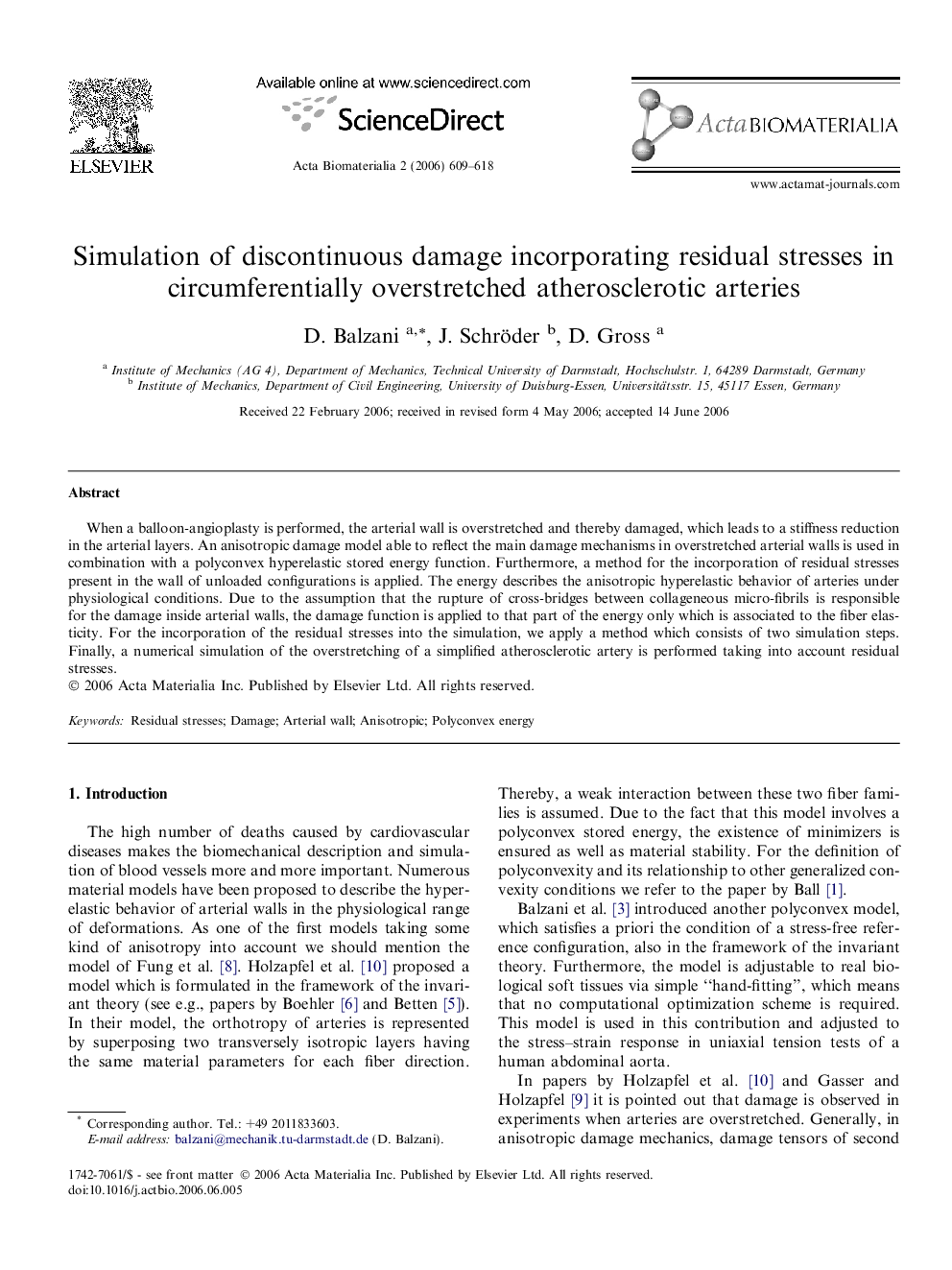| Article ID | Journal | Published Year | Pages | File Type |
|---|---|---|---|---|
| 2627 | Acta Biomaterialia | 2006 | 10 Pages |
When a balloon-angioplasty is performed, the arterial wall is overstretched and thereby damaged, which leads to a stiffness reduction in the arterial layers. An anisotropic damage model able to reflect the main damage mechanisms in overstretched arterial walls is used in combination with a polyconvex hyperelastic stored energy function. Furthermore, a method for the incorporation of residual stresses present in the wall of unloaded configurations is applied. The energy describes the anisotropic hyperelastic behavior of arteries under physiological conditions. Due to the assumption that the rupture of cross-bridges between collageneous micro-fibrils is responsible for the damage inside arterial walls, the damage function is applied to that part of the energy only which is associated to the fiber elasticity. For the incorporation of the residual stresses into the simulation, we apply a method which consists of two simulation steps. Finally, a numerical simulation of the overstretching of a simplified atherosclerotic artery is performed taking into account residual stresses.
